15 Things To Remember Trekking In The Himalayas
To take a break from narrating the day-to-day happenings of my Everest Base Camp trek, I have decided to share some of the things that I would recommend keeping in mind while trekking in the Himalayas (or probably countless other places as well).
Despite everything I thought I knew before setting off for Nepal, I was reminded once more that I know nothing.
I learned a lot hiking in the Himalayas, everything from hiking and sleeping in colder temperatures to managing and disposing of my waste (human or otherwise).

The Right of Way
Yeah, you’re hiking in the Himalayas surrounded by the planet’s most massive mountains, and yeah, maybe you think you’re a bit of a badass – but you’re not. Do you know who’s a badass? That porter wearing a cotton shirt, tattered pants, and something that you would be hard-pressed to describe as shoes while lugging eighty-plus kilos up the trail using a cloth strap around his head. Porters always have the right of way. This isn’t so much a rule as it is common sense. Without these guys (who are probably far underpaid for the services they perform), you wouldn’t be enjoying that pizza, beer, or otherwise trail-luxurious consumable at an elevation that thing has no business being at in the first place.
The Frozen Toilet Basin
Time for one of many toilet-related problems: that of the frozen toilet basin. You may not be accustomed to checking the contents of your toilet’s basin prior to use, but you should really make a habit of this in the Himalayas (or stick to pooping outside). Just because the water inside the bowl isn’t frozen, it doesn’t mean the water inside the basin has assumed the same state. You need to check that the toilet basin is not frozen if you don’t want to risk either 1) being “that hiker” or 2) undertaking a very uncomfortable migration of your fecal matter.
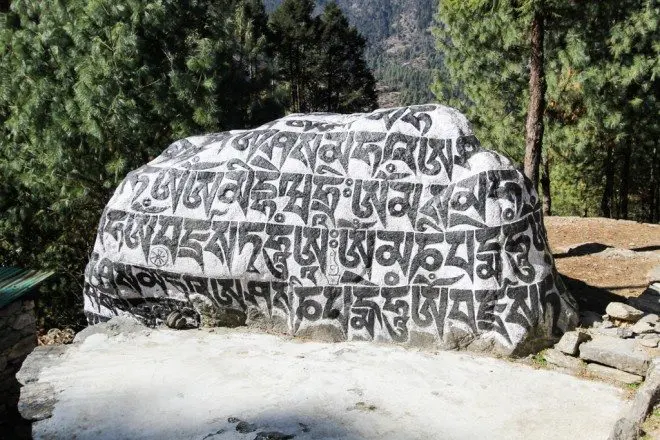
The Prayer Stuff
Yes, I know “the prayer stuff” is neither the most accurate nor politically correct name to use. However, should you find yourself trekking in the Himalayas, you will have no problem knowing what falls into this category. The procedure for passing mani stones (those huge rocks with the giant white writing on them) and the prayer wheels (those colorful spinning columns with the bells) is to keep them on your right as you walk past (meaning you walk to the left side of them) – aka go clockwise around them. Nobody will be upset with you if you don’t do this, but should you decide to respect local traditions and culture, then now you know what to do. And yes, you will see Nepalese going any which way around, but I look at it this way: at your house, if you decide not to flush the toilet, then who cares? It’s your house. But should you try that same thing in someone else’s house, well, I think we both know that isn’t going to go over too well.
The Prices
Remember that when trekking in the Himalayas, the price of everything is directly proportional to your distance from the supplies’ entry point into the mountains. I was unable to discover exactly what this formula is (something like [ALTITUDE²/BASE+MILES/π], I would guess), but know that a 50 rupee candy bar in Lukla (~$0.50 US) might end up costing you upwards of 400 rupees (~$4 US) at Gorak Shep (the highest outpost in the Himalaya). However, the prices never become too outrageous, and you will never(?) find yourself looking at a meal that costs more than 1,000 rupees (~$10 US).

The Toilet Paper
This one is simple but extremely important. When trekking in the Himalayas (and pretty much when in Nepal in general), always carry toilet paper, that is if you plan on having something other than your hand to wipe with (or you bidet like a true champion of the outdoors – I’m looking at you Appa). Most of the shops and lodges you will encounter in the Himalayas will stock the paper of toilet but few bathrooms will have it readily available for patrons.
The Empty Toilet Basin
So you’ve just dropped some weight via intestinal evacuation, and it’s time to send your friends to some underground dungeon of pollutants? Well, sometimes you may encounter a situation similar to the one I discovered and find that the flush function of your toilet has somehow been disabled. Turns out that sometimes you need to fill the toilet basin manually (with water – hopefully) before flushing. Should this happen to you, look for a large barrel nearby; it will often have a large can next to it (or (hopefully) floating inside) as well to make the job of scooping and filling quick and easy.

The Altitude
There isn’t much that scares me out in the wilderness (except for BearCat…and, of course, all this stuff), but altitude sickness presents a real and serious danger to hikers in the Himalayas. It is important to remember that our bodies do not function the same at altitude as they do at sea level (i.e. you will shit your pants if you try farting above 15,000 ft / 4572 m) and that the higher (and more quickly) you climb, to greater your risk of acquiring an altitude allied aliment becomes.
The Acclimatization
It may be obvious to those of you who have done your research, but if you weren’t previously aware, you need to take days to acclimatize whilst climbing up into the Himalayas (unless you’re a beast). What does this mean? It means that some days you sleep at the same altitude you started at to avoid becoming a casualty of altitude sickness. Once you get yourself above 10,000 ft / 3048 m, it is generally recommended that you only increase altitude by 1,000 ft / 305 m per day and that you take a day to acclimatize every 3,000 ft / 915 m. On acclimatization days, many people (intelligently) opt to day hike to an elevation higher than they plan on sleeping at before returning to their original elevation to rest. In the world of people who do these sorts of things, this is known as “climb high, sleep low”.

The Environment
Chances are that if you’re trekking in the Himalayas, you have some measure of respect for the environment (it is, after all, what’s providing you with all those pretty pictures to show off to your known associates back home). And since you love the Earth and want to do the right thing, you should really consider packing out everything you can. Despite there being garbage collection bins along the trails (and in the lodges – hint: lodge garbage gets burned), I have difficulty believing that a majority of the waste actually makes it out of the mountains (but if it does, then great!). And again, if you want to be a true champion of the outdoors (and you don’t like the idea of bideting your ass mouth), then pack out your toilet paper too.
The Water
It was difficult for me to find much on water filtration and purification in my research prior to venturing to Nepal, and I now think I know why: civilization is so prevalent that everyone buys boiled water from lodges or bottled water (addressed below). You can get unfiltered water for free from lodges or from a handful of natural sources I happened across (make sure lodges aren’t giving you “free” boiled water, or they will (probably) get pissed when you try to leave and not pay for anything). I would say (based on no factual data or personal expertise) that you want a water purification method that not only eliminates bacteria and protozoa but viruses as well. I am not a huge supporter of paying for water (or for sleeping outdoors) so I brought along a SteriPEN to purify my water (the Sawyer Mini doesn’t catch the bug).

The Water Bottles
So we’ve talked about the water, but now let’s talk about the water bottles. Practically all the shops and lodges will happily sell trekkers plastic two-liter water bottles – please don’t buy them. I can’t even imagine how many of these bottles are bought and discarded during peak season, and after seeing lodges improperly disposing of them in dumps on the village edge and burning them (in the stove that’s filling the room with heat – and toxic fumes). If you’re drinking the amount of water you should be (you probably aren’t), paying for all this water can easily become your biggest expense (unless you’re paying $5/hr for Wi-Fi every chance you get). Buy boiled water or bring a filter.
The Alcohol
Yes, alcohol is delicious, and it makes you feel good (until you wake up). Still, if you are seriously going to be trekking up into the Himalayas, then it would probably be in your best interest to avoid the stuff completely. Alcohol does nothing to help your acclimatization and instead hinders it (primarily) by leaving you (more) dehydrated. There exists no beverage in the mountains of Nepal that cannot be enjoyed elsewhere in the country (or even on your way down), and risking your trip for the chance to binge on some Everest Beer is nothing short of well worth the risk a terrible idea.

The Weather
Weather in the Himalayas is as big a conversation topic as anywhere else (because the weather is as close to legitimate sorcery as any of us will see in our lifetimes). However, the weather here is incredibly unpredictable and can turn on a dime. During my stay, snow was predicted for the first five days and I saw nothing but sun and blue skies. Everyone has their own theory on what source will provide you with the most accurate weather information (they’re all wrong), but I would suggest you ask the locals for their predictions (because then you have someone to blame when things turn out differently).
The Winter
Winter in the Himalayas. Sounds scary, huh? Well, no, just cold, I suppose—cold and infinity snow. A snow-oppressed land of absolute zero temperatures was what I pictured prior to my late December arrival in Nepal, but as usual, I was wrong. It turns out the winter months in Nepal are the driest in terms of precipitation (June to August is the monsoon season), and they provide some of the best weather and views of the Himalayas. However, it is cold. How cold? Well, unfortunately, I can’t give you an exact number, but I (comfortably) slept outdoors in a -20°F/-29°C sleeping bag for the duration of my trip (except when I slept indoors on account of my being lazy – not the cold).

The Meat
I am not sure what I really think about this, but plenty of people out in the world have voiced their opinion that meat in the Himalayas cannot be trusted since it has to be carried up the mountain on a porter’s back before making it to your plate. Personally, I chose to avoid meat during my trek (which saved money as well) and I did not get sick once (although I did grow incredibly tired of the limited offerings of the lodges). However, I met plenty of people who had no qualms with eating dead animals, and none of them reported any illnesses as a result. Some people say, “If you see animals running around the village or property, then the meat is probably locally sourced and safe”—a lie. You must remember that you are not on some mom-and-pop farm in some remote and unknown village. The Himalayas have become a tourist superhighway, and there are not hundreds of local animals being slaughtered every day to satisfy the caloric needs of every hiker wanting a meal.

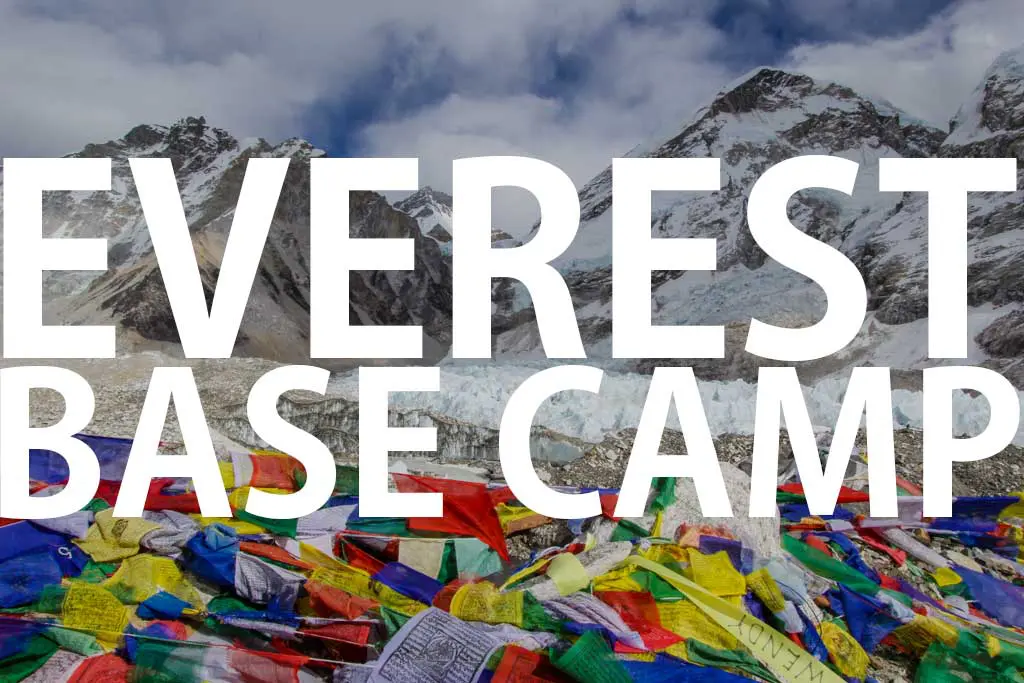
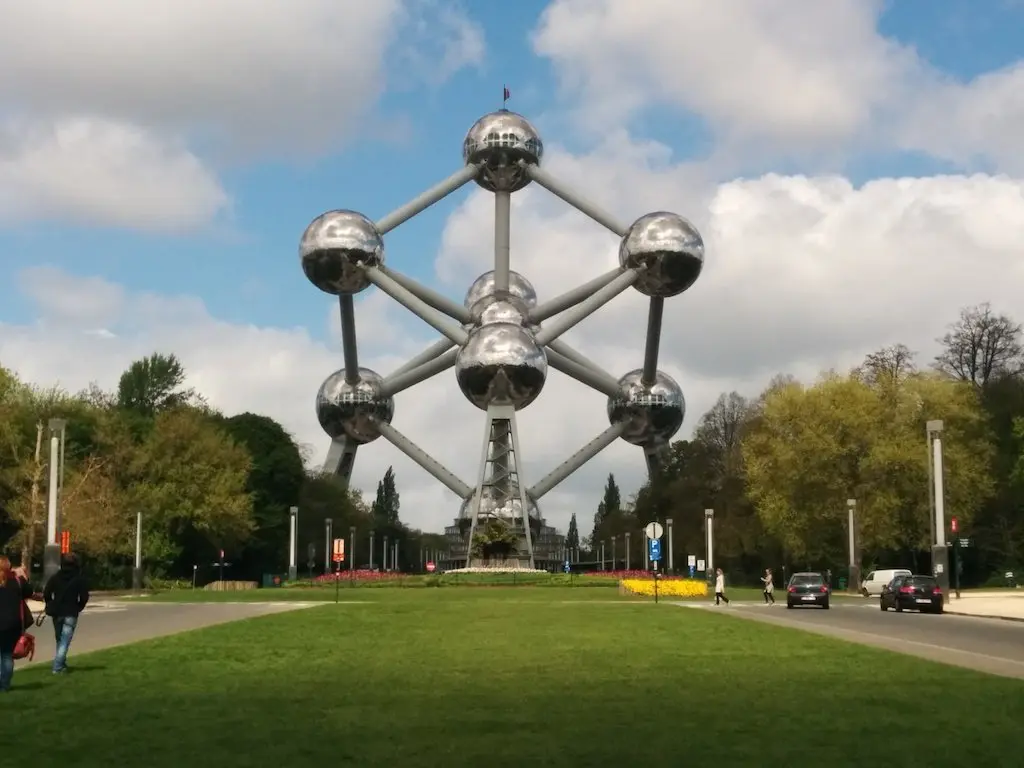
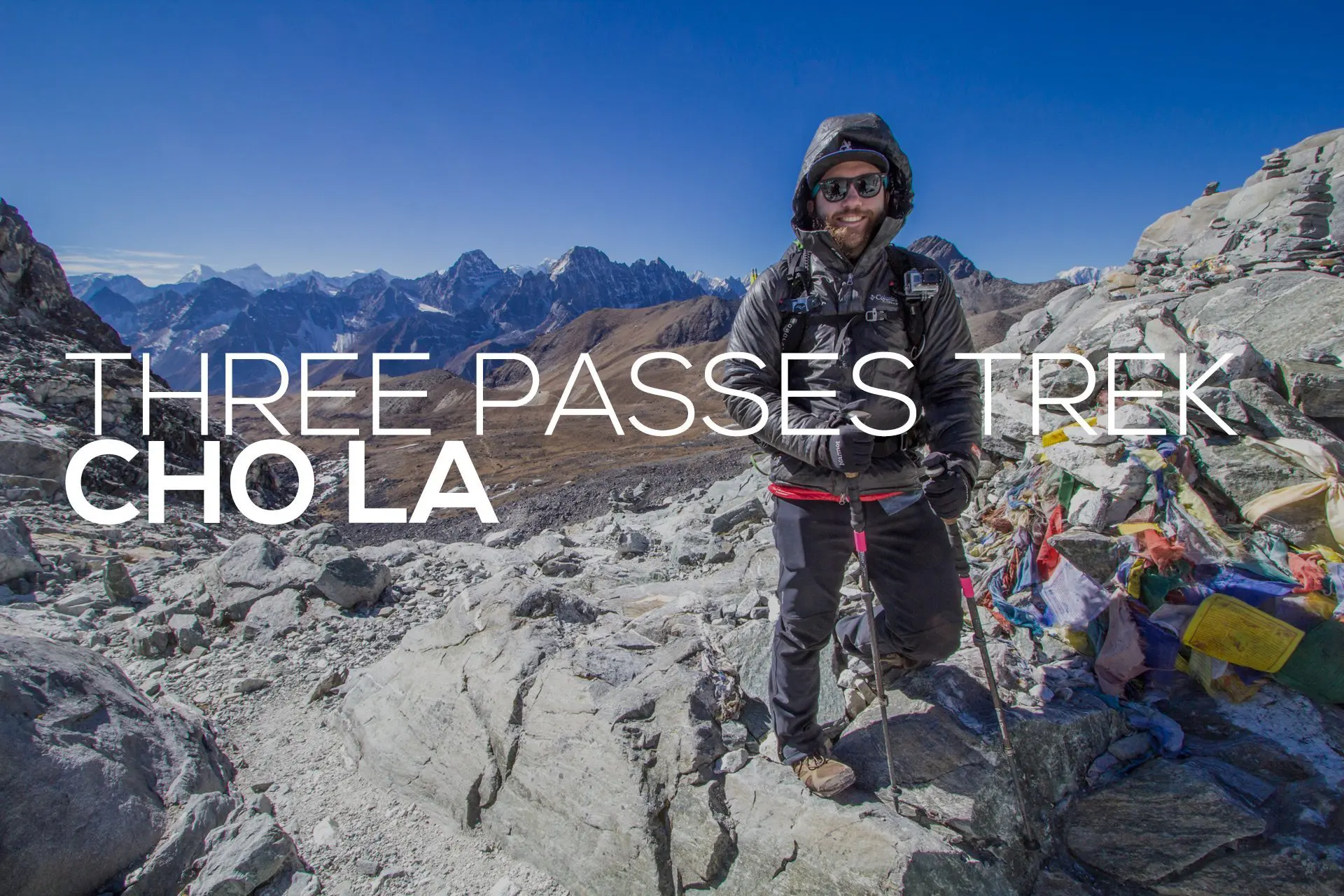

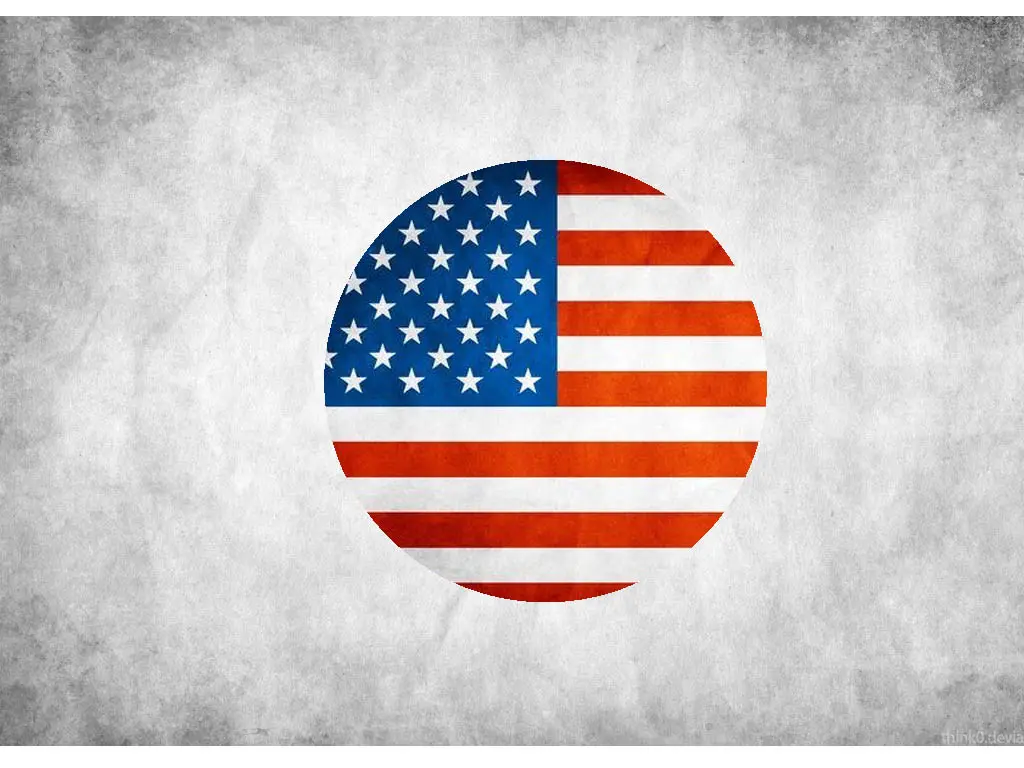

Complete information, Thanks for letting know to all adventure lover about Everest Base camp Hike in Nepal. It helps a lot for those who are planning..
Have a great trip!
Just a note, if you’re keeping the “prayer stuff” on your right side as you walk around it, you are actually walking *clockwise,* not counterclockwise around it.
Thanks, friend. Fixed!
Trekking in Himalayas is great exciting adventure which every one of you should experience. Some of the best trekking trips in himalayas are Chandrakhani pass, sar pass, roopkund trek, hampta pass, pin parvati & much more. Trekking aids in glorifying solitude in every sense of word. Walking in campsite, reading books, observing nature, passing through the beautiful trails, meeting new people, surviving in this temperature & conditions all this things make you stronger. One must surely opt for trekking in himalayas. It will change your life to great extent.
Awesome info, between this and your entries on each day have given me a pretty good picture of what to expect. You’re making me seriously consider doing this next year, it looks amazing.
I’m actually working on a post now to go back and answer all the unanswered questions I had before setting out on this trek. Should be up some time in the next week or so. I’ll update with a link here once it goes live.
Best of luck on your trek!